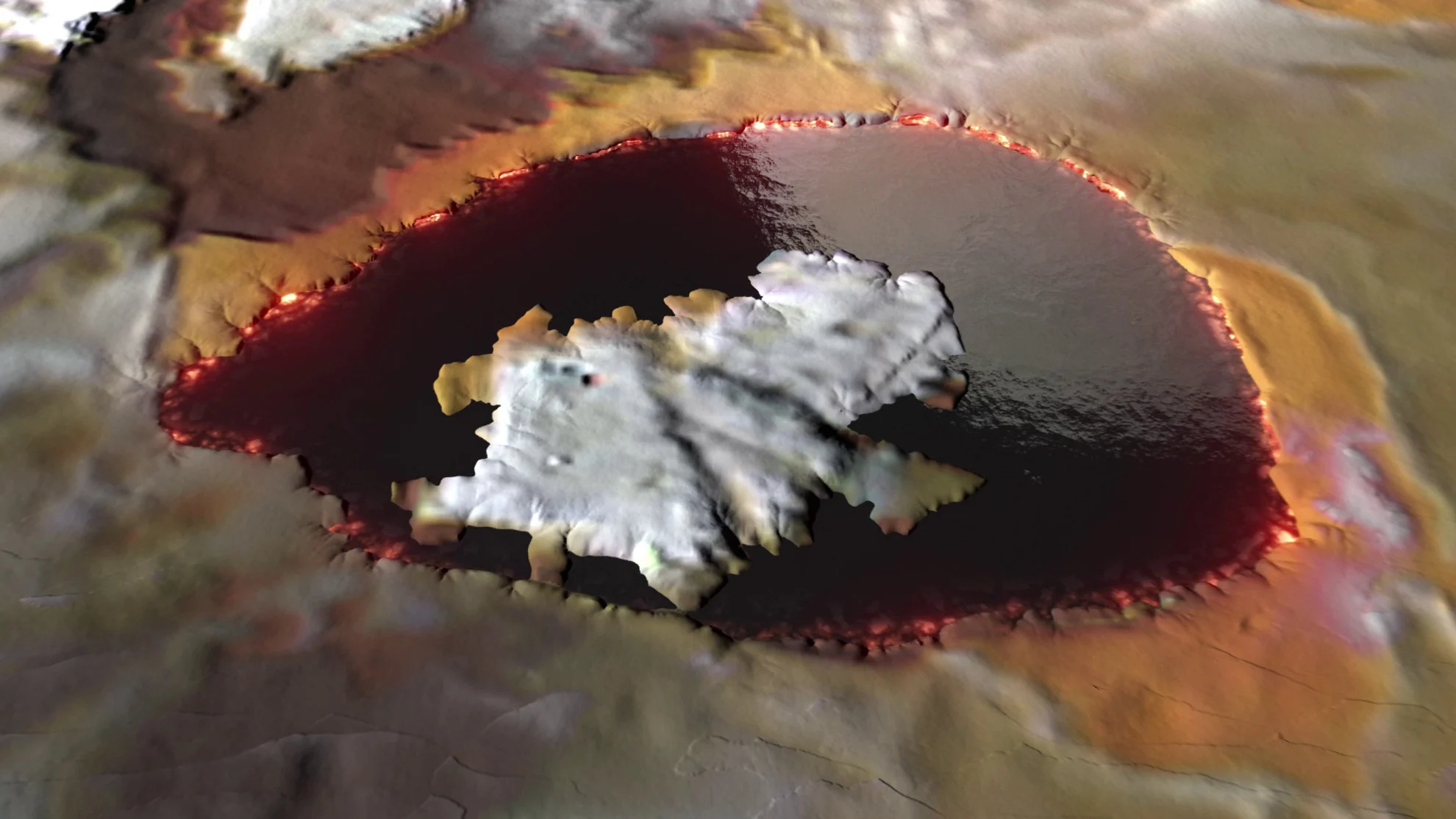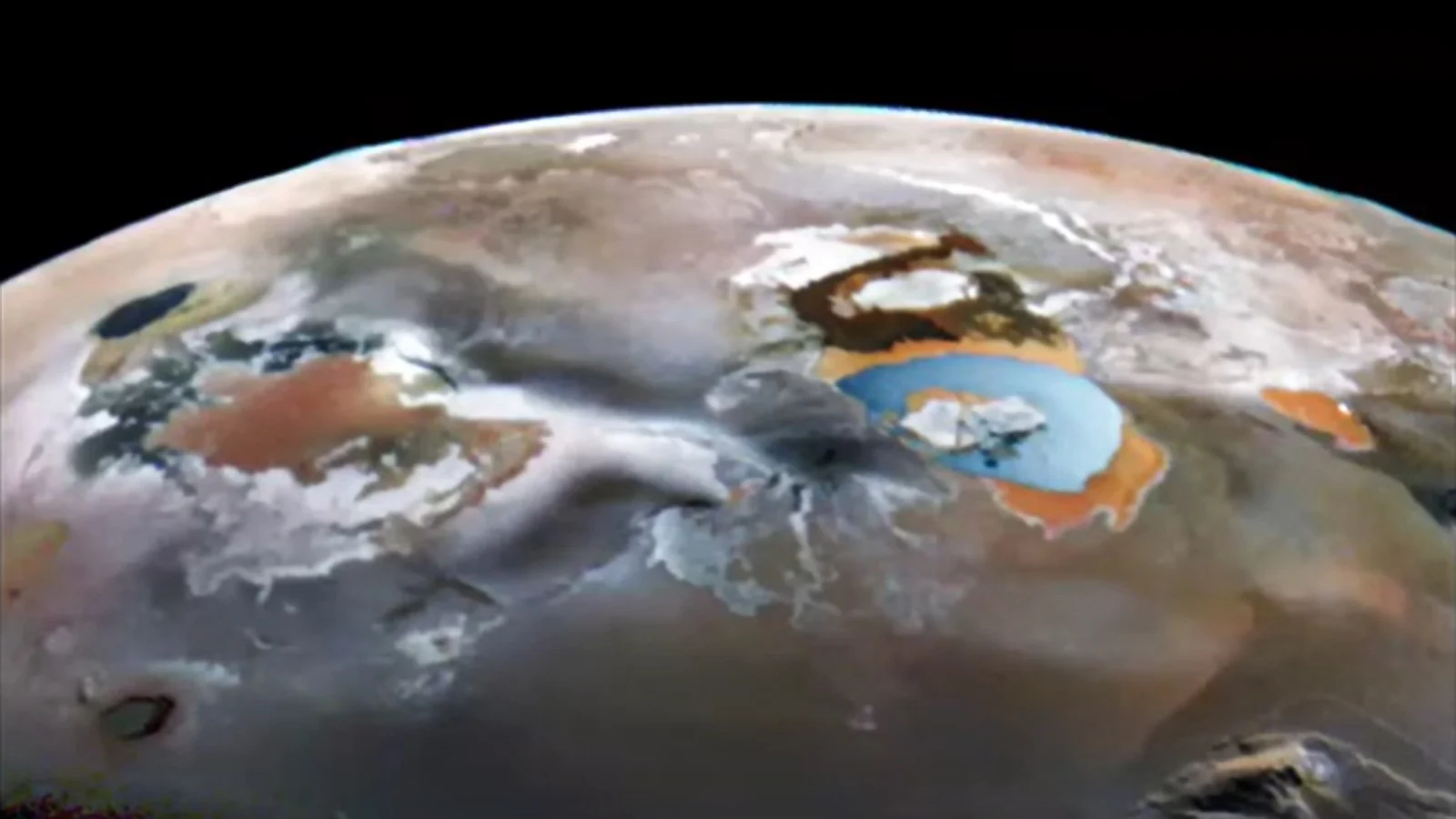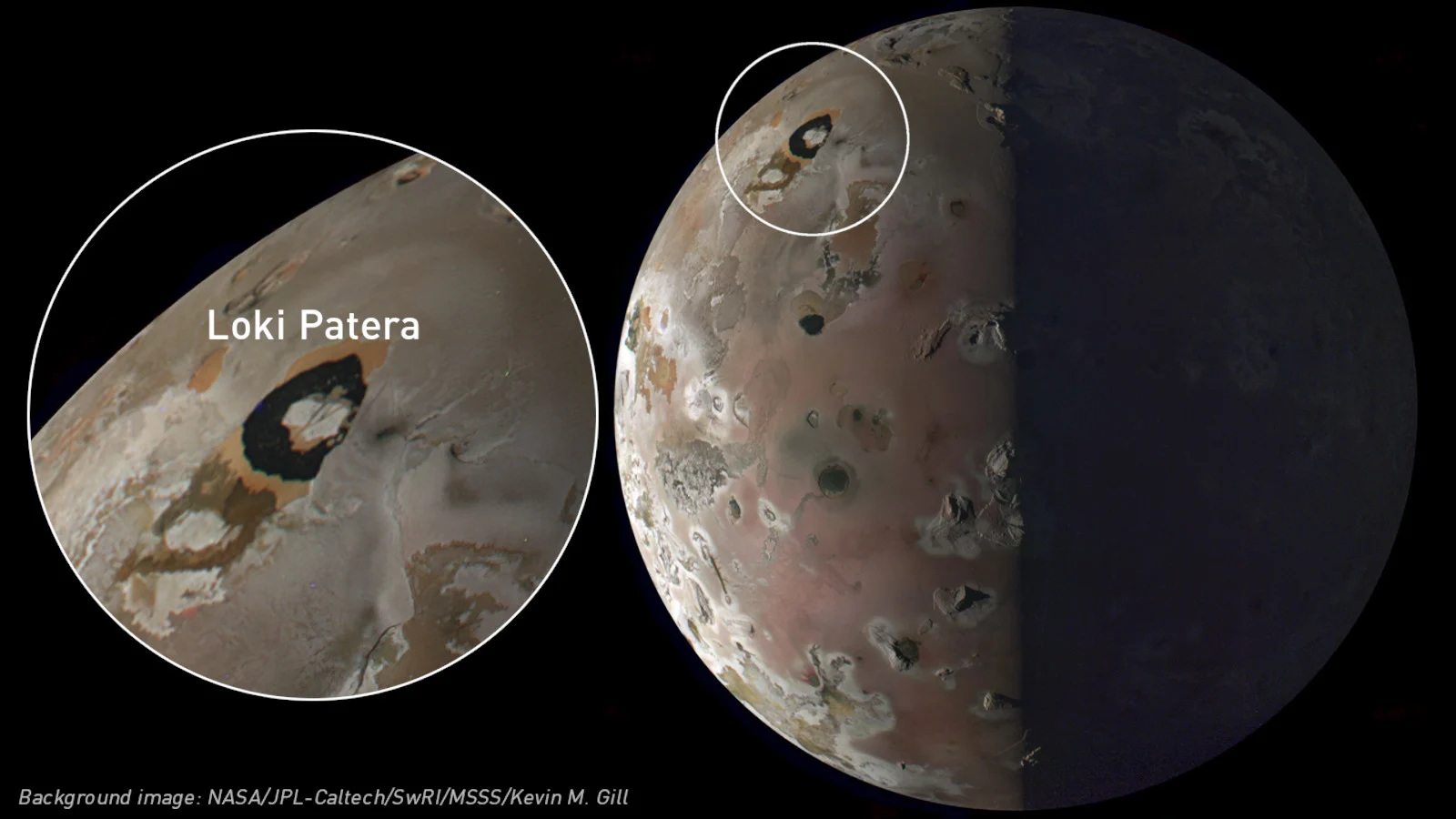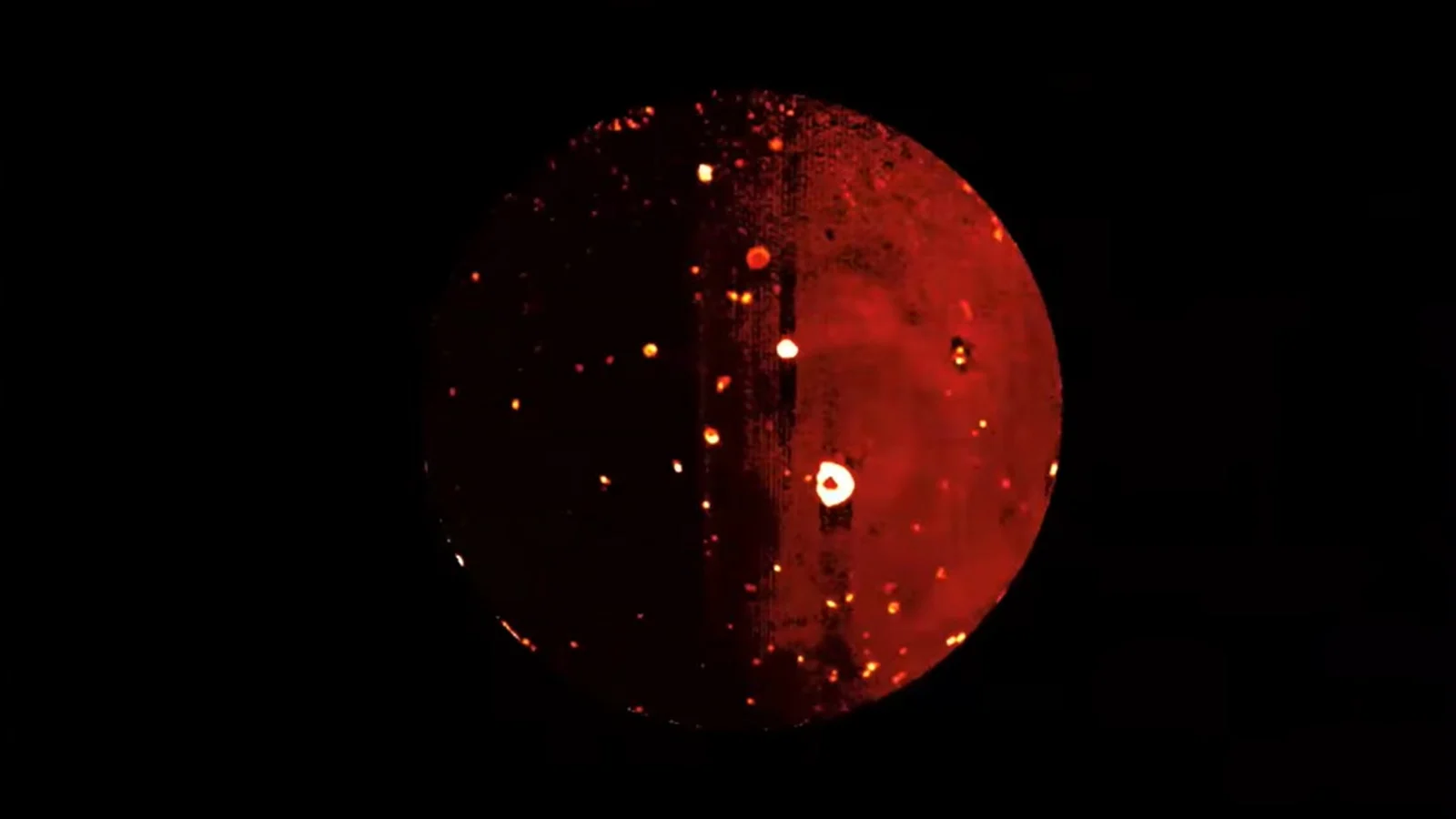
Juno reveals 'smooth as glass' lava lake on Jupiter's moon, Io
Images from NASA's Juno probe have revealed some surprising details about Io's tortured volcanic surface.

This JunoCam image of Loki Patera (right of centre) was captured in February 2024 during Juno's 58th flyby of Jupiter. The brightness of the feature is caused by sunlight reflecting off the solid lava surface, in the same way that light is reflected by a mirror, aka specular reflection. (NASA/JPL-Caltech/SwRI/MSSS/Gerald Eichstädt/Thomas Thomopoulos)
The closest images yet of Jupiter's volcanic moon have revealed one of the major surface features is nearly as smooth as a sheet of glass!
In December 2023 and February 2024, NASA's Juno spacecraft made close passes by Io, the innermost of Jupiter's four large Galilean moons. During these flybys, Juno came within 1,500 km of Io and used the JunoCam instrument to snap the closest views yet of this unique moon's surface.
"Io is simply littered with volcanoes, and we caught a few of them in action," Scott Bolton, the principle investigator for the Juno mission, said in a news conference at the 2024 European Geophysical Union General Assembly on April 16.

An image of Jupiter's moon Io, captured during the Juno spacecraft's 57th flyby of Jupiter, in December 2023, captured an amazing look at Loki Patera, an immense volcanic lake in the moon's northern hemisphere. (NASA/JPL-Caltech/SwRI/MSSS/Kevin M. Gill)
"We also got some great close-ups and other data on a 200-kilometre-long lava lake called Loki Patera. There is amazing detail showing these crazy islands embedded in the middle of a potentially magma lake rimmed with hot lava," Bolton explained.
Some of the views captured during Juno's flyby gave the mission team a special treat. They were able to see light reflecting off Loki Patera's solid crust, revealing its remarkably smooth surface.
"The specular reflection our instruments recorded of the lake suggests parts of Io's surface are as smooth as glass, reminiscent of volcanically created obsidian glass on Earth," Bolton added.

A zoomed view of the previous image highlights the smooth reflective surface of Loki Patera. (NASA/JPL-Caltech/SwRI/MSSS/Gerald Eichstädt/Thomas Thomopoulos)
While Loki Patera is known as a lava lake, under its cooled solid surface is a reservoir of molten magma (the name for liquid rock that is underground). Meanwhile, hot-spots along the edges of the feature reveal locations of emerging lava (the name for molten rock that is above ground).
Bolton was careful to specify that the surface of Loki Patera is simply reminiscent of obsidian glass. While it may have formed in a very similar way, through the rapid cooling of lava, it may not be composed of the same materials as obsidian here on Earth.
Watch below: Data from JunoCam was used to create this artist's conception of Loki Patera and how the light from Jupiter would reflect off its glass-like surface
NASA calls Io the most volcanically active world in the solar system.
According to the space agency, the remarkable volcanic activity we see on Io is due to tidal forces.
The intense gravitational pull of Jupiter combined with precisely timed tugs exerted by neighbouring moons, Europa and Ganymede, squeeze and squash Io, superheating its interior. Thus, apart from a solid iron core in the middle and a thin shell around the outside, Io is likely entirely molten inside.

This infrared image of Io was recently captured by Juno's JIRAM instrument and shared by Bolton during the April 16 EGU24 press conference. The bright 'ring' just right of centre shows the heat from magma underlying the solid surface of Loki Patera. Credit: NASA/JPL-Caltech/SwRI/ASI/INAF/JIRAM
The result is that Io's surface is studded with an estimated 400 active volcanoes, which constantly renew its features with lava escaping from the interior.
As of April 9, 2024, Juno completed its 60th close pass around Jupiter ('perijove'). Included in this was an additional encounter with Io, but at a distance of 16,500 kilometres. Thus, it appears that the December 2023 and February 2024 flybys (perijove 57 & 58, respectively) will be our closest looks at Io for some time.
Juno's next flyby of Jupiter, perijove 61, is expected on May 12. NASA currently has a total of 16 more perijoves planned between now and September 2025.











